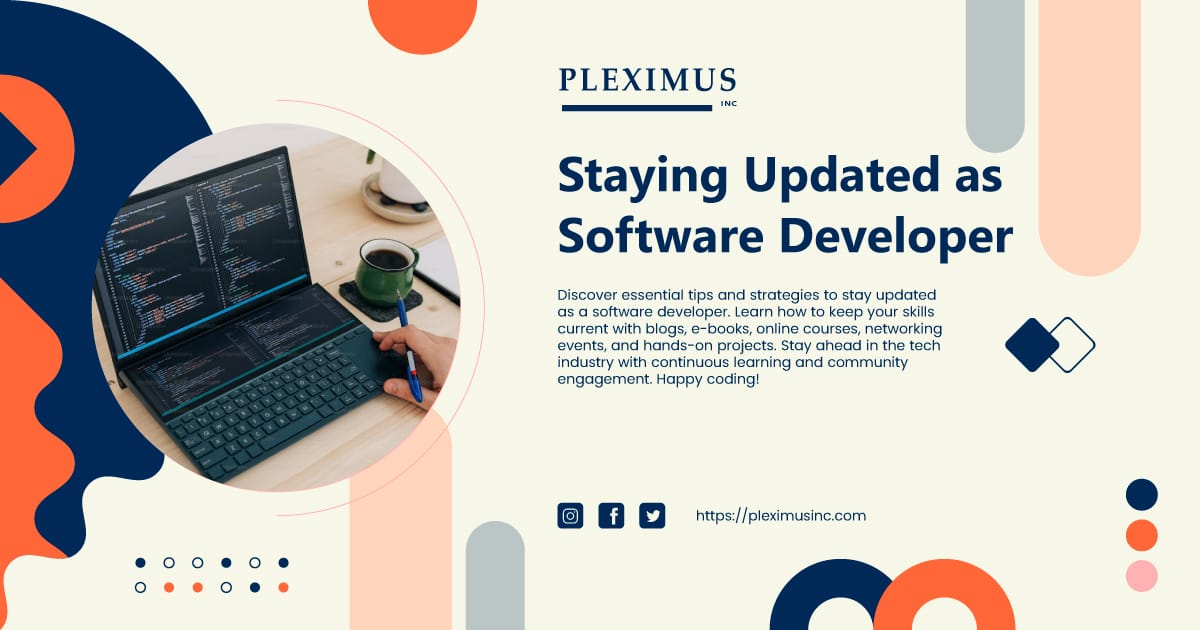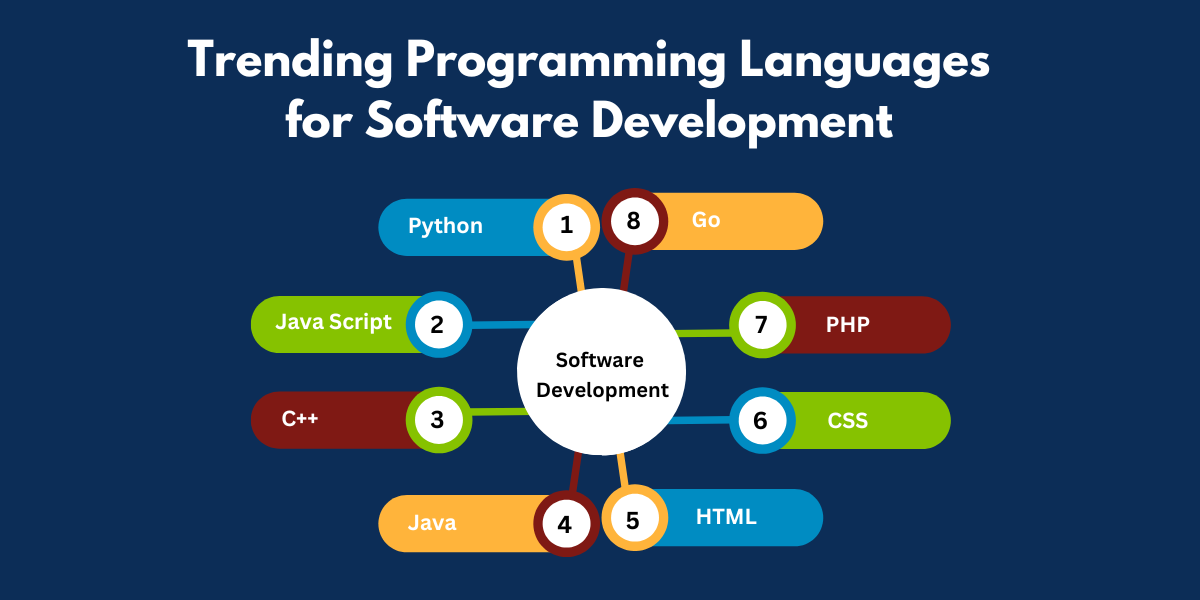Staying Updated as a Software Developer
Discover essential tips and strategies to stay updated as a software developer. Learn how to keep your skills current and stay ahead in the tech industry. Happy coding!

Staying updated as a software developer is essential to remain competitive and effective in the rapidly evolving tech landscape. Regularly learning new programming languages, tools, and frameworks, along with participating in industry conferences and online communities, helps keep your skills current and relevant. Continuous learning and adaptability are key to success in this dynamic field.

What is Software Development?
Software development is the process of designing, creating, testing, and maintaining computer programs and applications. The process, also known as the Software Development Life Cycle (SDLC), includes several phases. It provides a method for building products that meet technical specifications and user requirements.
The SDLC provides an international standard that software companies can use to build and improve their computer programs. It offers a defined structure for development teams to follow in the design, creation, and maintenance of high-quality software. The aim of the IT software development process is to build effective products within a defined budget and timeline.
Major Steps in Software Development
There are six major steps in the software development life cycle, including:
1. Needs Identification
Needs identification is a market research and brainstorming stage of the process. Before a firm builds software, it needs to perform extensive market research to determine the product's viability.
Developers must identify the functions and services the software should provide so that its target consumers get the most out of it and find it necessary and useful. There are several ways to get this information, including feedback from potential and existing customers and surveys.
The IT teams and other divisions in the company must also discuss the strengths, weaknesses, and opportunities of the product. Software development processes start only if the product satisfies every parameter necessary for its success.
2. Requirement Analysis
Requirement analysis is the second phase in the software development life cycle. Here, stakeholders agree on the technical and user requirements and specifications of the proposed product to achieve its goals.
This phase provides a detailed outline of every component, the scope, the tasks of developers, and testing parameters to deliver a quality product.
The requirement analysis stage involves developers, users, testers, project managers, and quality assurance. This is also the stage where programmers choose the software development approach such as the waterfall or V model.
The team records the outcome of this stage in a Software Requirement Specification document which teams can always consult during the project implementation.
3. Design
Design is the third stage of the software development process. Here, architects and developers draw up advanced technical specifications for the software required. Stakeholders will discuss factors such as risk levels, team composition, applicable technologies, time, budget, project limitations, method, and architectural design.
The Design Specification Document (DSD) specifies the architectural design, components, communication, front-end representation, and user flows of the product. This step provides a template for developers and testers and reduces the chances of flaws and delays in the finished product.
4. Development and Implementation
The next stage is the development and implementation of the design parameters. Developers code based on the product specifications and requirements agreed upon in the previous stages.
Following company procedures and guidelines, front-end developers build interfaces and back-ends while database administrators create relevant data in the database. The programmers also test and review each other's code.
Once the coding is complete, developers deploy the product to an environment in the implementation stage. This allows them to test a pilot version of the program to make performance match the requirements.
5. Testing
The testing phase checks the software for bugs and verifies its performance before delivery to users. In this stage, expert testers verify the product's functions to make sure it performs according to the requirements analysis document.
Testers use exploratory testing if they have experience with that software or a test script to validate the performance of individual components of the software. They notify developers of defects in the code.
If developers confirm the flaws are valid, they improve the program. The testers repeat the process until the software is free of bugs and behaves according to the requirements.
6. Deployment and Maintenance
Once the software is defect-free, the developers can deliver it to customers. After the release of a software's production version, the IT software development company creates a maintenance team.
The maintenance team manages issues that the clients encounter while using the product. Maintenance can be a hot fix if it is a minor issue, but severe software failures require an update.

Importance of Staying Updated as a Software Developer
In the ever-evolving field of software engineering, staying updated with the latest technologies and industry trends is crucial. Software engineers embrace a culture of continual learning and innovation, seeking new tools and techniques to improve their skills and effectively contribute to cutting-edge projects.

How to Keep Your Skills Updated as a Software Developer
1. Read Blogs and Newsletters
Adopt the habit of reading programming blogs and newsletters daily for 30-40 minutes to stay updated on the latest technologies and hacks. This practice is akin to reading the newspaper and helps in keeping you informed about new developments in the programming world. This is a key aspect of how to stay updated as a developer.
2. Read E-Books
Certain programming concepts can be better understood by reading technical books. Focus on books related to the language or technology you are working with the most. Books provide an excellent source for in-depth exploration of technical topics, thus improving developer skills significantly.
3. Take Online Courses
Always be curious to learn something new. Assess your current skills and determine your learning goals. Online courses and video tutorials are valuable resources for gaining new knowledge.
Evaluate what you need to learn and select the best course or training program to achieve your goals. This strategy is vital for an updated software developer.

4. Attend Events
Networking with like-minded individuals is essential for personal and professional growth. Attend events, conferences, or meetups to build a strong network and gain insights into specific technologies or trends.
Local events and informal meetups can provide a wealth of knowledge and opportunities. This is another effective method of staying updated as a developer.
5. Work on Side Projects
Practice is key to becoming a better software developer. Dedicate time every day to work on side projects and apply your knowledge practically.
Real-world projects help solidify your understanding and improve your skills more effectively than theoretical learning alone. This is crucial for improving developer skills.
6. Experiment with New Technologies
Hands-on experience is one of the best ways to learn. Create small projects to experiment with new languages, frameworks, or tools. For example, if you're curious about a new JavaScript framework, build a simple application with it.
Practical experience will deepen your understanding and help you evaluate the technology's pros and cons. This approach helps in becoming an updated software developer.
7. Engage with Developer Communities
Engaging with developer communities is essential for staying current and improving your developer skills. Join online forums and communities.
Participating in developer conferences and meetups, found via platforms like Meetup.com, provides networking opportunities and insights from peers, further enhancing your skills.
8. Leverage Social Media for Professional Growth
Social media can be a powerful tool for staying updated. Follow key influencers on Twitter to engage in conversations and gain industry insights.
Some influential tech Twitter accounts to follow include those of prominent developers and tech leaders. Additionally, joining LinkedIn groups can boost your professional networking and visibility, helping you connect with recruiters and industry professionals.
9. Enhance Your Online Presence
A strong online presence can significantly impact your career prospects. Maintain an updated LinkedIn profile to showcase your skills, projects, and certifications. This visibility can attract recruiters and industry professionals.
Building a personal portfolio website allows you to showcase your projects, skills, and professional achievements. Adding a blog to your portfolio demonstrates thought leadership and shares your knowledge with the community.
10. Stay Updated with Tools and Technologies
Keeping track of new tools and frameworks is essential. Websites like Product Hunt and GitHub Trending highlight the latest tools and technologies.
Additionally, adopting Continuous Integration/Continuous Deployment (CI/CD) practices is crucial for modern development workflows. Tools like Jenkins and Travis CI can help automate your development process.
11. Hands-On Practice and Building a Portfolio
Practical experience is crucial for an updated software developer. Contribute to open-source projects on platforms like GitHub and GitLab to gain real-world coding experience and contribute to the community.
Conclusion
Staying updated as a software developer is a dynamic and ongoing process. By embracing a growth mindset, engaging with the community, taking advantage of online resources, and continuously experimenting with new technologies, you can keep your skills sharp and stay ahead in the ever-changing tech landscape.
Join our dynamic team where innovation meets impact! We're on a mission to solve complex problems using cutting-edge technology, and we need talented developers like you to make it happen.
Remember, the journey of learning is as important as the destination. Happy coding!
